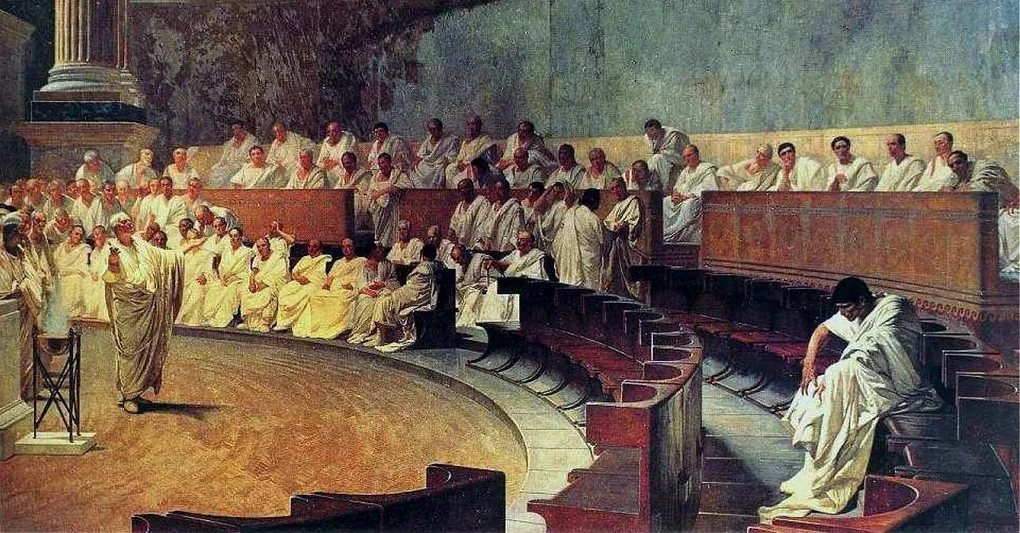
A guide to Latin scansion for dactylic hexameter
Scansion is identifying the rhythm of a line of Latin poetry. The most important aspects are the length of the vowels/syllables and the divisions within each line.
Dactylic hexameter
The Aeneid uses dactylic hexameter.
- Latin lines can be separated into between 13 and 17 distinct syllables. Each syllable contains one vowel.
- Dactylic hexameter means 6 feet per line. Each line can be separated into 6 feet.
- A foot is either two or three syllables. Each syllable corresponds to one vowel. Each vowel is pronounced either long or short.
- Each foot is either a dactyl, spondee or trochee, each with a different configuration of long or short vowels.
Classification of feet
1st to 4th feet: dactyl ( _ u u ) or spondee ( _ _ )
5th foot : dactyl ( _ u u)
6th foot: trochee ( _ u) or spondee ( _ _ )
_ is called a macron and indicates a long vowel, u indicates a short vowel
Scansion Process
Remember: scansion and meter do not change the pronunciation of the line
Marking the syllables
- check for elision
- mark the vowels that are long by position (a vowel followed by two consonants)
- (optional, if the line is difficult) mark the vowel that are long or short by nature. For example, diphthongs are usually long, ‘que’ is usually short and ‘o’ at the end of a word is usually long. The patterns just has to be memorised. A dictionary will help.
Scanning the line
- scan the 6th feet, which is two syllables (always spondee or trochee)
- scan the 5th feet, which is three syllables (always dactyl). The rest of the sentence is now separated into 4 feet.
- deduce the dactyls and spondees through logic, for example, if the second last syllable of what is remaining is long, then the last syllable must also be long (to create a spondee).
Putting in the Caesura
- Put in the Caesura
Vowels and consonants
What are the vowels?
The Latin vowels are a, e, i, o, u, y (present in Greek words).
What are the consonants?
| Letter | Consonant Status |
|---|---|
| h | not a consonant |
| th, ph, ch | a single consonant (from Greek) |
| qu, gu (u is not a vowel, but part of the consonant) | a single consonant |
| i, u (when followed by a vowel and at start of the word) | can become a consonant |
| pr, pl, br, tr, dr, cr, cl, gr, fr, fl (mutes b, c, d, f, g, p, t followed by liquids l, r) | single consonant |
The letter i
- If i is the first letter of the word, and followed by a vowel (u, a, e), then the ‘i’ is a consonant. For example, ‘Iulius’ is pronounced ‘Yulius’, or ‘iam’ is pronounced ‘yam’
- If i is between two vowels within a word, for example: eius, maior, peior, huius, Troia, cuius, then i is a consonant and joins with the last vowel e-ius, hu-ius, Tro-ia except ai-o
Diphthongs
- diphthongs are long: ae, oe, ei, eu, au, ui (only in cui, cuius, huic, huius)
- They are combinations of two vowels to make a single sound
- Not all occurrences of these vowels together are diphthongs eg puella or aer
- diphthongs are always long except when it is an open syllable (followed by another vowel); ae in praeacutus is short
Vowel that is long by position
A vowel directly followed by two consonants (according to the consonant classifications above) is long. These consonants do not have to be in the same word as the vowel.
Vowel that is long by nature
Use the dictionary to see what endings are long by nature, at the end of a word. For example, ‘i’, ‘o’ and ‘u’ are usually long. Furthermore, diphthongs are long.
Elision
Elision occurs when
- a word ends in a vowel or a vowel + m
- the next word begins with a vowel of h
The vowel ending the preceding word is puella ambulat = puellambulat
The elided vowel is never scanned. Very rarely, the poet doesn’t elide the vowel for a particular effect, called a hiatus.
Caesura
A caesura is any break between words within a foot. The main caesura should be marked with two slashes ( // ). It should occur after the first (long) syllable of the foot.
-it is placed in the third foot if there is a caesura there. We can’t put a Caesrua between two longs, inside an elision, or if there is no space between words in the third foot.
- otherwise it is placed in the fourth, and if not present in the fourth, the second foot
Diaresis
A diaeresis is any time the end of a word coincides with the end of a foot.